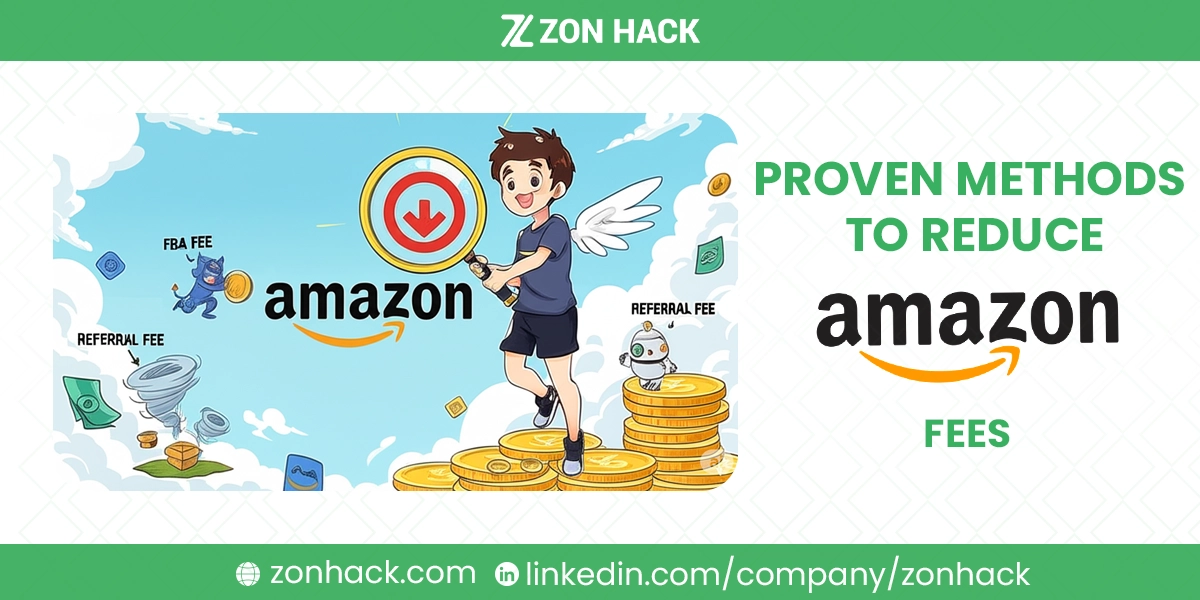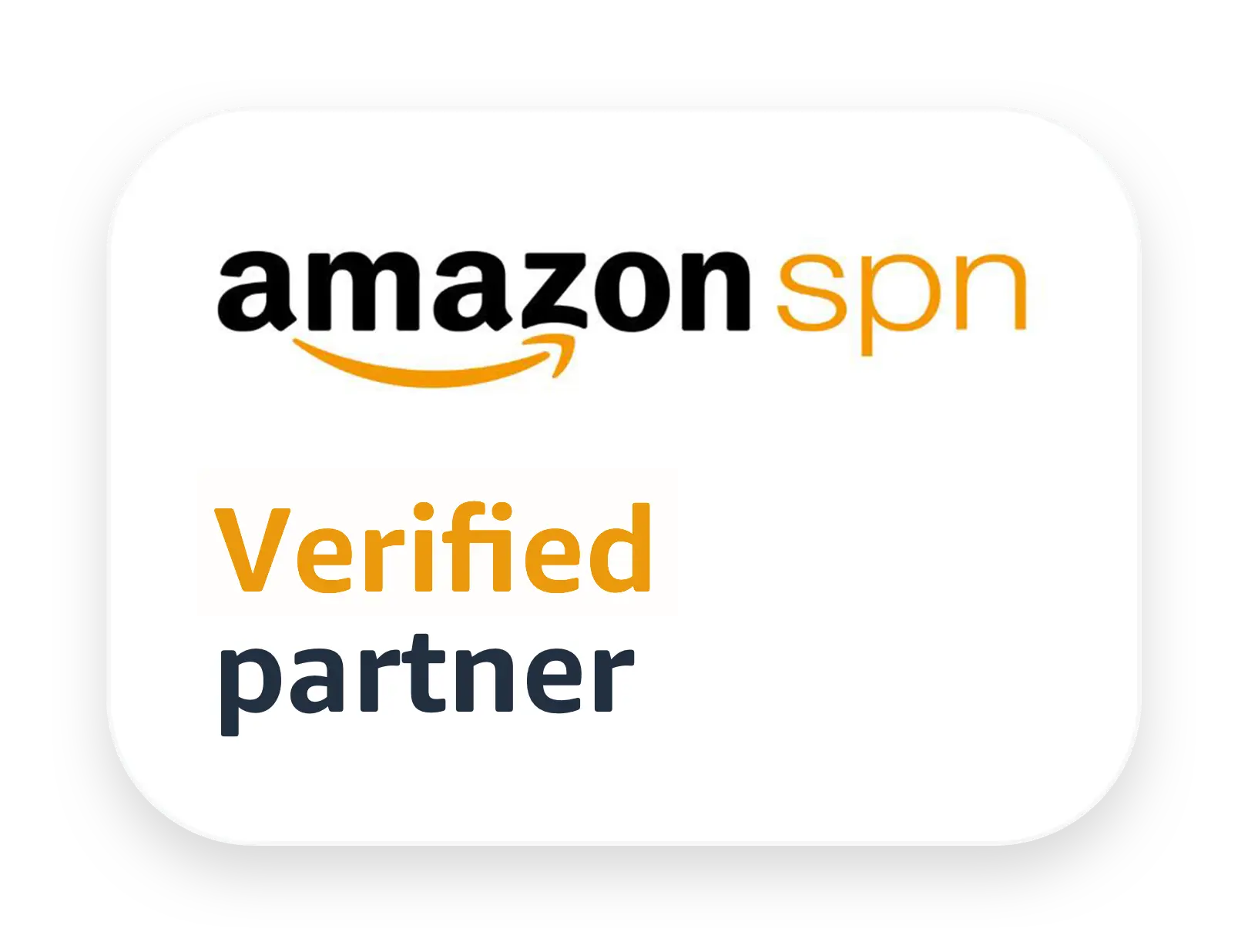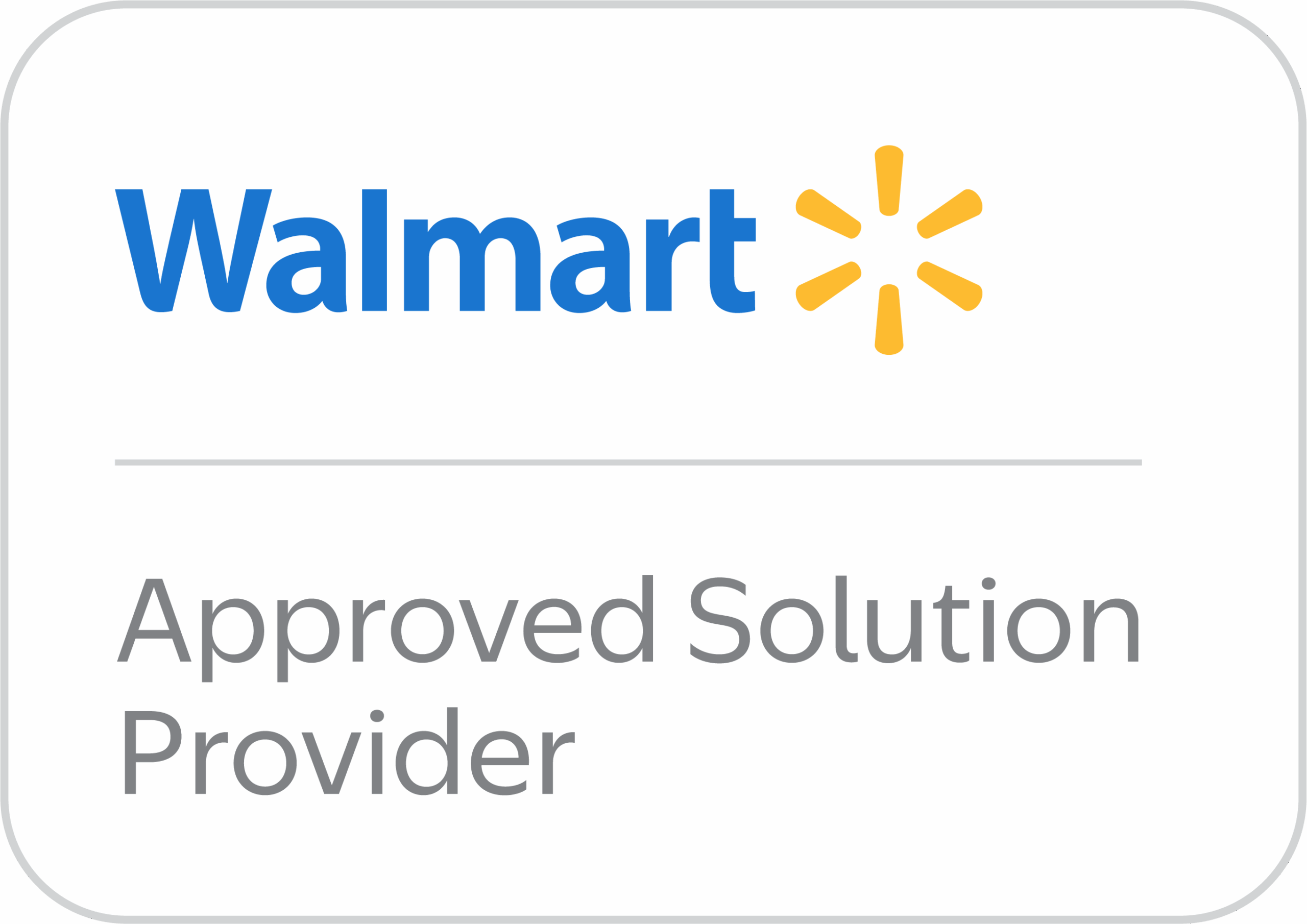Selling on Amazon can be a game-changer for businesses, opening up a massive marketplace to millions of potential customers. But let’s be honest, it’s not all rainbows and sunshine. Those Amazon fees can really eat into your profits, making you wonder if you’re truly getting ahead. It’s like a silent partner taking a big chunk of your hard-earned money.
But don’t despair! There are smart, proven ways to trim down those pesky fees. It’s not about magic tricks, but rather a strategic approach to how you manage your products, inventory, and even your listings. Let’s dive in and see how we can put more money back into your pocket, where it belongs.
Optimizing Fulfillment by Amazon (FBA) Fees:
FBA is a lifesaver for many sellers, but it comes with its own set of costs. Let’s talk about how to keep those FBA fees from spiraling out of control.
Packaging Optimization:
Think of your product’s packaging as its first impression, not just for customers, but for Amazon’s fee structure too! Tiny changes here can lead to big savings.
Reduce Size and Weight:
This is probably the most crucial tip in the FBA world. Amazon’s fulfillment fees are heavily dependent on how big and heavy your product is. Seriously, it’s like they have a measuring tape and a scale at every corner. Even a slight reduction in dimensions or weight can bump your product into a lower size tier, which means a lower fee. I always advise sellers to get ruthless with their packaging. Can you make it a millimeter shorter? A gram lighter? Every little bit adds up over thousands of units. Think minimal, yet protective.
Use Cost-Effective Materials:
Boxes are great, but sometimes they’re overkill. If your product doesn’t need rigid protection, why not opt for a polybag? They’re lighter, smaller, and cheaper. Flat packaging is another winner for items that don’t need to retain a specific shape during transit. It’s about being smart with your materials, not cheap. I’ve seen so many sellers save a bundle just by switching from a small box to a sturdy polybag. It’s a simple change that can make a real difference.
Consider Amazon’s Packaging Programs:
Amazon is actually trying to help you here, believe it or not! Their “Frustration-Free Packaging (FFP)” and “Ships in Product Packaging (SIPP)” programs are fantastic. Not only do they often improve the customer experience by making packages easier to open, but they can also reduce your fulfillment costs. These programs streamline the packaging process, making it more efficient for Amazon, and that efficiency often translates into savings for you. It’s a win-win, really.
Inventory Management
Your inventory isn’t just stock; it’s a living, breathing entity that can either cost you a fortune or save you one. Smart inventory management is key to cutting FBA fees.
Maintain Optimal Stock Levels:
This is where data becomes your best friend. Overstocking means you’re paying for storage space you don’t need, and understocking means missed sales. Neither is good for your wallet. I always tell sellers to regularly review their sales data. Use demand forecasting tools – there are plenty of great ones out there – to predict what you’ll sell. It’s like being a weather forecaster for your products, anticipating the sunny sales days and the slow ones.
Avoid Long-Term Storage Fees:
These fees are the silent killers of profit. If an item sits in an Amazon warehouse for over 365 days, boom, you’re hit with long-term storage fees. My advice? Don’t let your inventory collect dust. Liquidate slow-moving items with discounts, use Amazon Outlet, or even create removal orders before that 365-day mark hits. It’s better to sell at a lower margin or even break even than to keep paying Amazon to store your forgotten treasures.
Monitor Inventory Performance Index (IPI):
Your IPI score is like your inventory’s report card. A higher IPI means you’re doing a great job managing your stock, and Amazon rewards you with lower storage fees and higher storage limits. To boost your IPI, focus on keeping popular products in stock, quickly selling off slow-movers, and making sure your inventory levels are balanced. It’s all about showing Amazon you’re a responsible inventory manager.
Avoid Low Inventory Level Fees:
This is a newer one, but equally important. Amazon might charge you if your inventory falls below their historical 28-day averages. It’s their way of encouraging you to keep popular items readily available. So, keep a close eye on your stock levels and replenish them well before you’re running on fumes. Don’t let your bestsellers become ghosts in the machine!
Strategic Storage:
If you’re using Amazon’s Inbound Distribution Network (AWD) with Auto Replenishment to FBA, you’re ahead of the game. Amazon can take care of replenishing your FBA stock based on sales forecasts, and often, you won’t incur additional inbound configuration service fees. It’s a smart way to let Amazon do some of the heavy lifting.
Consolidate Shipments:
When it’s time to send inventory to FBA warehouses, don’t send a bunch of small, frequent shipments. Plan your restocks carefully and try to consolidate them into larger, less frequent shipments. This helps reduce your inbound shipping costs. Think of it like carpooling for your products – more efficient, less costly.
Manage Unfulfillable Inventory:
Damaged or returned items that can’t be resold are a drain on your resources. They still take up space and can still incur storage fees. Address them promptly. Decide if they can be refurbished, sold at a discount, or if it’s time to remove them. Don’t let unfulfillable inventory become a hidden cost sink.
Product Strategy
The products you choose and how you present them can heavily influence the fees you pay. It’s about being smart from the ground up.
Choose the Right Products:
This might sound obvious, but it’s often overlooked. Focus on high-demand, fast-selling products. The quicker an item sells, the less time it spends in Amazon’s warehouse, and the less you pay in storage fees. Smaller, lighter, non-perishable goods are generally FBA fee darlings. They’re easier to store, cheaper to ship, and often have lower fulfillment costs.
Take Advantage of Low-Price FBA Rates:
Did you know Amazon offers reduced fulfillment costs for products under a certain price point, typically around $10? This can be a fantastic opportunity to expand your product lines with cost-effective options. If you have products that fit this criterion, you could see significant savings on their fulfillment fees. It’s like a secret handshake for cheaper shipping!
Bundle Products Strategically:
Bundling complementary products is a genius move. Instead of paying fulfillment fees for multiple individual items, you pay for just one bundled unit. This can save you a pretty penny on both fulfillment and packaging. Look at your sales data. What do customers often buy together? If you sell a phone case and a screen protector, why not bundle them? It’s a win for the customer and a win for your bottom line.
Shipping to Amazon
The journey of your product to Amazon’s warehouse also has cost implications. Let’s make that journey as cheap as possible.
Use Amazon’s Partner Carrier Program (PCP):
If you’re sending inventory to FBA, the Partner Carrier Program is your best bet. Amazon has pre-negotiated rates with trusted carriers, and these rates are usually much lower than what you could get on your own. It’s like having a special VIP pass for shipping. I’ve seen countless sellers save substantial amounts just by opting for PCP.
Avoid Inbound Defect Fees:
Amazon has strict guidelines for how you prepare and ship your inventory. Labels need to be correct, packaging needs to be proper, and everything needs to be in order. If you mess up, you could face inbound defect fees. These are totally avoidable! Just make sure you understand and follow all of Amazon’s shipping and preparation guidelines. It’s like doing your homework before the big test – it pays off.
Reducing General Amazon Seller Fees:
Beyond FBA, there are other fees that Amazon charges that can be reduced with a bit of savvy.
Referral Fees:
These are the fees Amazon charges for connecting you with their customers. They vary widely, so let’s talk strategy.
Understand Category Fees:
Amazon’s referral fees are like a chameleon; they change depending on your product category. A book might have a different fee percentage than a piece of electronics. Be absolutely sure you know the exact percentage for your products. Sometimes, if you’re on the fence between two categories for a product, checking the referral fees can sway your decision. In some markets, like Amazon.in, they’ve even introduced zero referral fees for certain low-priced items, which is fantastic! Always keep an eye out for these kinds of initiatives.
Join Amazon Brand Registry Program:
If you’re a brand owner, getting into the Amazon Brand Registry program is a no-brainer. Besides protecting your brand, it can sometimes unlock referral fee discounts. It’s Amazon’s way of encouraging brand owners to take ownership of their presence on the platform. Plus, it gives you access to a bunch of other cool tools, so it’s a win-win situation.
Drive External Traffic:
This is a bit more advanced, but it can be super effective. If you can drive traffic to your Amazon listings from outside sources – think social media campaigns, your own blog, or email marketing – Amazon sometimes offers referral fee discounts. They love seeing you bring new customers to their platform. It’s like bringing a friend to a party; the host appreciates it!
Account Type:
Choosing the right account type is like picking the right size shoe – essential for comfort and cost-effectiveness.
Individual vs. Professional Seller Account:
This is a simple math problem. If you sell fewer than 40 items per month, the Individual seller account, which charges $0.99 per item sold, is usually cheaper. But if you’re hitting more than 40 sales, the Professional account’s monthly subscription fee becomes the more economical choice. Do the math based on your typical sales volume. Don’t pay for a professional account if you’re only selling a handful of items a month!
Returns:
Returns are a part of doing business, but they come with their own set of costs. Let’s try to keep them to a minimum.
Minimize Refunds:
Every return costs you. Amazon charges administrative fees and a percentage of the referral fee back for returns. So, the best way to save here is to simply have fewer returns! How do you do that? Be super clear and accurate with your product descriptions. Use high-quality images that show your product from all angles. Manage buyer expectations. If a customer knows exactly what they’re getting, they’re less likely to send it back. It’s like setting clear expectations in a relationship – it prevents heartbreak (and financial pain!).
Utilize Returns and Restock Fee Recovery:
Sometimes, products get returned in perfectly resellable condition. Don’t let them sit there! Explore Amazon’s refurbishment options, or if that’s not viable, look into liquidation. You might not get full price, but something is always better than nothing. And always check if you can recover any restock fees from customers if the return was due to buyer fault.
Advertising Costs:
Advertising is essential for visibility, but it can be a money pit if not managed well.
Optimize Advertising Campaigns:
This is where I get really excited about data! Track your Advertising Cost of Sale (ACoS) like a hawk. Optimize your keywords constantly. Are your ads converting? Are they bringing in profitable sales? If not, tweak them. Cut underperforming keywords. Adjust your bids. Continuously monitor and adjust your campaigns. Think of it as a garden; you need to water the plants that are growing and pull the weeds that are costing you money.
Optimize Listings Before Ads:
Before you even think about throwing money at ads, make sure your product listings are absolutely stellar. Do they have strong, relevant keywords? Is the content compelling? Do they clearly explain your product’s benefits? A well-optimized listing will convert traffic much better, meaning your ad spend goes further. It’s like having a perfectly organized store before you put up the “Sale” sign.
Regular Audits and Analysis:
You can’t manage what you don’t measure. Regular check-ups are essential for fee reduction.
Use Amazon’s Tools:
Amazon provides some fantastic tools in Seller Central. The FBA Revenue Calculator is a gem for estimating fees before you even list a product. The Fee Preview report gives you a snapshot of what you’ll be charged. And the Payments Dashboard is where you can see all the actual fees incurred. Use these tools regularly. They’re there to help you, so don’t let them gather digital dust.
Regularly Audit FBA Fees:
Here’s a little secret: Amazon isn’t perfect. Sometimes, they might misclassify your product’s size or weight, leading to incorrect fees. I’ve seen it happen. So, make it a habit to regularly check your FBA fee reports for any discrepancies. If something looks off, dispute it! Provide them with evidence, and often, you can get those incorrect charges refunded. It’s your money, fight for it!
Less Common or More Advanced Strategies:
For those looking to go the extra mile or for larger operations, these strategies can provide even more leverage.
Negotiating with Amazon (Limited Scope for Most Sellers):
Let’s be real, for most of us individual sellers, directly negotiating standard fees with Amazon is like trying to negotiate with a brick wall. It’s just not going to happen. However, for very large vendors who operate under Amazon Vendor Central, there can be some leverage. These big players sometimes negotiate cost price increases with their Amazon Retail managers, especially during joint business planning. So, if you’re a small fish, focus on the other strategies. If you’re a whale, well, you might have a bit more wiggle room.
Multi-Channel Fulfillment (MCF):
FBA is incredibly convenient, no doubt. But for some products, or for sales outside of Amazon, it might not always be the most cost-effective solution. This is where Multi-Channel Fulfillment (MCF) comes in. Consider if fulfilling orders from your own warehouse (FBM – Fulfilled by Merchant) or using a third-party logistics (3PL) provider could actually save you money. This is especially true for items with very high FBA fees due to their size or weight. It requires more effort on your part, but the savings can be substantial. It’s about weighing convenience against cost.
Supplier Negotiation:
This might seem unrelated to Amazon fees, but stick with me. By negotiating better pricing with your suppliers, you directly improve your overall profit margins. A higher profit margin means that Amazon’s fees, while still there, take a smaller percentage bite out of your actual profit. It’s like finding a better deal on ingredients; it makes your final product more profitable, regardless of other costs. Always be looking for ways to get a better deal upstream.
Conclusion
Reducing Amazon fees isn’t about cutting corners. It’s about working smarter, not harder. From optimizing packaging to managing inventory like a pro, every small step can lead to big savings. Remember, selling on Amazon is all about balance—managing fees while keeping customers happy. Start with the basics, keep an eye on your reports, and don’t be afraid to experiment with strategies like bundling or multi-channel fulfillment.




